
Marquess of Normanby is a title that has been created twice, once in the Peerage of England and once in the Peerage of the United Kingdom. The first creation came in 1694 in the Peerage of England in favour of John Sheffield, 3rd Earl of Mulgrave. He was a notable Tory politician of the late Stuart period, who served under Queen Anne as Lord Privy Seal and Lord President of the Council. In 1703 this first Marquess of Normanby was further honoured when he was made Duke of Buckingham and Normanby. These titles became extinct on the death of the 2nd Duke in 1735.

Constantine Henry Phipps, 1st Marquess of Normanby,, styled Viscount Normanby between 1812 and 1831 and known as The Earl of Mulgrave between 1831 and 1838, was a British Whig politician and author. He notably served as Lord Lieutenant of Ireland from 1835 to 1839 and as Home Secretary from 1839 to 1841 and was British Ambassador to France between 1846 and 1852.
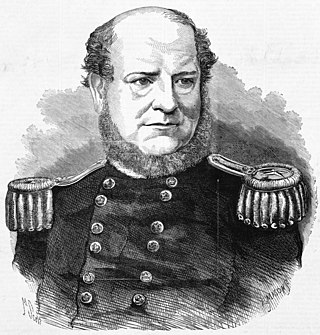
George Augustus Constantine Phipps, 2nd Marquess of Normanby, styled Viscount Normanby between 1831 and 1838 and Earl of Mulgrave between 1838 and 1863, was a British Liberal politician and colonial governor of Nova Scotia, Queensland, New Zealand and Victoria.
Duke of Buckingham held with Duke of Chandos, referring to Buckingham, is a title that has been created several times in the peerages of England, Great Britain, and the United Kingdom. There have also been earls and marquesses of Buckingham.
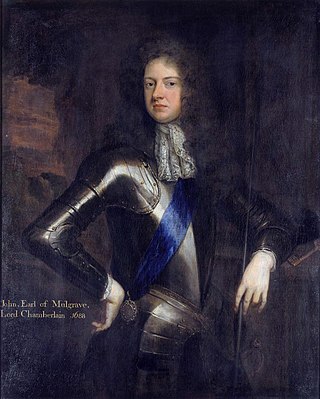
John Sheffield, 1st Duke of Buckingham and Normanby, was an English poet and Tory politician of the late Stuart period who served as Lord Privy Seal and Lord President of the Council. He was also known by his original title, Lord Mulgrave.

Earl of Cardigan is a title in the Peerage of England, currently held by the Marquesses of Ailesbury, and used as a courtesy title by the heir apparent to that Marquessate, currently David Brudenell-Bruce, Earl of Cardigan, son of the 8th Marquess. The Brudenell family descends from Sir Robert Brudenell, Chief Justice of the Common Pleas from 1520 to 1530. His great-grandson, Sir Thomas Brudenell, was created a Baronet in the Baronetage of England, styled "of Deene in the County of Northampton", on 29 June 1611. On 26 February 1628, he was raised to the Peerage of England as Baron Brudenell, of Stanton Wyvill in the County of Leicester, and on 20 April 1661 he was further honoured when he was made Earl of Cardigan, also in the Peerage of England. On his death, the titles passed to his son, Robert, the 2nd Earl, and on the 2nd Earl's death to his grandson, George, the 3rd Earl, the 2nd Earl's only son, Francis, Lord Brudenell, having predeceased his father.

General Henry Phipps, 1st Earl of Mulgrave,, styled The Honourable Henry Phipps until 1792 and known as The Lord Mulgrave from 1792 to 1812, was a British soldier and politician. He notably served as Foreign Secretary under William Pitt the Younger from 1805 to 1806.
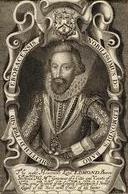
The title Earl of Mulgrave has been created twice. The first time as a title in the Peerage of England and the second time as a Peerage of the United Kingdom.

Baron Stafford, referring to the town of Stafford, is a title that has been created several times in the Peerage of England. In the 14th century, the barons of the first creation were made earls. Those of the fifth creation, in the 17th century, became first viscounts and then earls. Since 1913, the title has been held by the Fitzherbert family.

Baron Sheffield is a title that has been created four times: once in the Peerage of England, twice in the Peerage of Ireland, and once in the Peerage of the United Kingdom.

Marquess of Powis was a title in the Peerage of England. It was created in 1687 for William Herbert, 1st Earl of Powis. He had already succeeded his father as third Baron Powis in 1667 and had been created Earl of Powis in the Peerage of England in 1674; Marquess of Powis and Viscount Montgomery in 1687. When James II went into exile in France, the Marquess followed him. He served as Comptroller of the Royal Household and his wife Elizabeth as Governess of the Royal children. He was rewarded in 1698 by the titles Duke of Powis and Marquess of Montgomery, but these titles in the Jacobite Peerage were not recognised in England.
The post of Lord Lieutenant of the North Riding of Yorkshire was created in 1660, at the Restoration, and was abolished on 31 March 1974. From 1782 until 1974, all Lords Lieutenant were also Custos Rotulorum of the North Riding of Yorkshire.
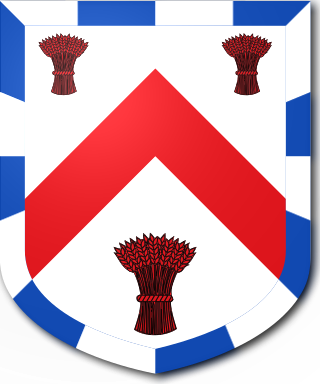
The Sheffield Baronetcy, of Normanby in the County of Lincoln, is a title in the Baronetage of Great Britain. It was created on 1 March 1755 for Charles Herbert Sheffield, the illegitimate son of John Sheffield, 1st Duke of Buckingham and Normanby. On the death of his half brother, the 2nd Duke, in 1735, he inherited the family estates including Buckingham House which was sold to George III in 1762 and Normanby Hall which latter remained the family residence until 1963. Thereafter the family's home was Sutton Park, York.

Oswald Constantine John Phipps, 4th Marquess of Normanby,, styled Earl of Mulgrave until 1932, was a British peer and philanthropist for blind people.
Edmund Sheffield, 2nd Earl of Mulgrave was an English peer who supported the Parliamentary cause during the English Civil War period.

Mulgrave Castle refers to one of three structures on the same property in Lythe, near Whitby, North Yorkshire, England. One of these, known as the "old" or "ancient" castle, was by legend founded by Wada, a 6th-century ruler of Hälsingland. The second castle, caput of the feudal barony of Mulgrave, was of Norman construction and remained active until destroyed by order of Parliament in 1647. The third is a country house which was constructed by Lady Catherine Darnley and passed in 1718 by marriage into the Phipps family, when her daughter Lady Catherine Annesley married William Phipps. The Phipps family later held the titles of Baron Mulgrave, Earl of Mulgrave and Marquess of Normanby.
Constantine Phipps, 1st Baron Mulgrave was an Irish peer. In 1767 he was created Baron Mulgrave, of New Ross in the County of Wexford, in the Peerage of Ireland.
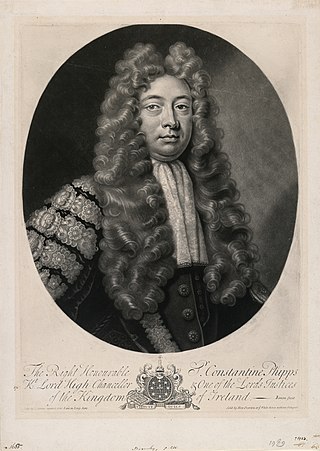
Sir Constantine Henry Phipps (1656–1723) was an English-born lawyer who held the office of Lord Chancellor of Ireland. His term of office was marked by bitter political faction-fighting and he faced repeated calls for his removal. His descendants held the titles Earl of Mulgrave and Marquess of Normanby. Sir William Phips, the Governor of Massachusetts 1692–94, was his first cousin.
Catherine Sheffield, Duchess of Buckingham and Normanby, formerly Lady Catherine Darnley, was an illegitimate daughter of King James II of England, and was married to two English noblemen in succession.













